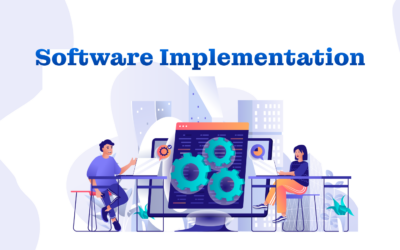DevOps in Enterprise: Improved Productivity and Performance

Introduction:
In today’s fast-paced digital landscape, businesses are continually seeking ways to improve their productivity and performance. One approach that has gained significant traction is DevOps. This methodology has transformed the way enterprises develop, deploy, and manage software applications.
In this blog, we’ll learn about what DevOps is, explore the factors that contribute to a successful DevOps practice, key-challenges, benefits, and its impact on business performance.
What is DevOps?
DevOps, a blend of “Development” and “Operations,” is a set of practices that aims to bridge the gap between software development and IT operations. It emphasizes collaboration, communication, and automation throughout the software development lifecycle. The goal of DevOps is to streamline the process of delivering software, enabling enterprises to respond to market demands more rapidly while maintaining high-quality applications.
What Makes a Successful DevOps Practice?
Several key factors contribute to the success of a DevOps practice within an enterprise:
- Cultural Shift: A successful DevOps practice requires a cultural transformation that promotes collaboration and shared responsibility among development, operations, and quality assurance teams.
- Automation: Automation of repetitive tasks, such as testing, deployment, and configuration management, reduces manual errors, accelerates processes, and enhances overall efficiency.
- Continuous Integration (CI) and Continuous Deployment (CD): CI involves regularly integrating code changes into a shared repository, followed by automated testing. CD extends this by automatically deploying code changes to production environments once they pass testing.
- Monitoring and Feedback: Continuous monitoring of applications and infrastructure provides real-time insights into performance and helps identify and resolve issues promptly. Feedback loops enable teams to improve iteratively.
- Toolchain Utilization: The adoption of appropriate tools for version control, automated testing, infrastructure provisioning, and monitoring is crucial for smooth DevOps operations.
Key Challenges of DevOps Adoption in an Enterprise:
Challenge 1: A Shift from Legacy Applications to Microservices:
Legacy applications, often characterized by monolithic architecture, are tightly integrated systems that can pose challenges when transitioning to a microservices architecture. In a microservices architecture, applications are broken down into smaller, loosely coupled components called microservices. While this shift offers benefits like improved scalability and agility, it presents challenges as well:
- Legacy Complexity: Legacy applications have intricate interdependencies, making the process of breaking them into microservices complex and time-consuming. Decoupling these dependencies without disrupting functionality requires careful planning and execution.
- Data Management: Microservices often manage their own databases, which can lead to data consistency challenges. Coordinating data across multiple microservices while ensuring consistency becomes a critical concern.
- Testing and Quality Assurance: Testing becomes more intricate in a microservices environment due to the increased number of components. Ensuring end-to-end functionality and maintaining high quality across microservices demand robust testing strategies and automation.
- Operational Overhead: Microservices introduce a higher number of components to manage, deploy, and monitor. This increases operational overhead, necessitating the adoption of effective container orchestration tools and continuous monitoring solutions.
Challenge 2: The Conflict Between Development and Operations Teams’ Toolset:
The traditional divide between development and operations teams can lead to conflicts over toolsets and practices. Development teams prioritize rapid delivery of features, while operations teams emphasize stability and reliability. This discrepancy can result in several challenges:
- Tool Incompatibility: Development teams might select tools optimized for speed, while operations teams lean toward tools focused on stability. The lack of compatibility between these toolsets can hinder smooth collaboration.
- Communication Barriers: Misalignment of toolsets often leads to communication barriers between teams. A lack of common understanding can result in misunderstandings, delayed deployments, and suboptimal performance.
- Automation Integration: Integrating development and operations toolchains is essential for successful DevOps. However, integrating disparate tools can be complex and require dedicated effort to ensure seamless automation.
- Cultural Differences: Overcoming the cultural differences between development and operations teams is crucial. A shift towards a shared goal of delivering high-quality software promptly requires fostering a culture of collaboration, shared responsibility, and open communication.
Challenge 3: Cultural Changes:
Cultural change is at the heart of DevOps adoption. It involves transforming traditional work patterns and attitudes to align with the principles of collaboration, continuous improvement, and shared responsibility. This change can be challenging due to the following reasons:
- Resistance to Change: People tend to resist change, especially when it involves disrupting established routines and practices. Moving from siloed working to cross-functional collaboration can meet resistance from team members.
- Organizational Silos: Traditional organizational structures often foster silos, where teams work independently and lack visibility into each other’s work. Overcoming these silos requires a cultural shift towards transparency and information sharing.
- Blame Culture: In a blame-oriented culture, mistakes are punished rather than treated as opportunities for learning. Adopting DevOps principles requires shifting from blame to a blameless culture that focuses on identifying root causes and improving processes.
- Cultural Training: Changing culture necessitates education and training to help employees understand the benefits of DevOps and how it aligns with business goals. This ongoing training encourages adoption and fosters a sense of ownership.
Benefits of DevOps Implementation for Enterprises:
- Faster Time-to-Market: DevOps accelerates development and deployment cycles, enabling enterprises to release new features, updates, and bug fixes swiftly, meeting market demands promptly.
- Improved Collaboration: Breaking down silos and promoting cross-functional collaboration enhances communication, reduces misunderstandings, and fosters a shared sense of responsibility for project success.
- Enhanced Quality: Automated testing and continuous monitoring minimize defects, ensuring software is of higher quality. Swift issue identification and resolution contribute to a smoother user experience.
- Efficient Resource Utilization: Automation reduces manual intervention, optimizing resource allocation and lowering operational costs by eliminating wastage of time and resources.
- Scalability: DevOps practices allow enterprises to scale applications and infrastructure seamlessly, accommodating varying workloads and effectively handling surges in user demand.
DevOps and its Impact on Business Performance:
- Agility and Innovation: DevOps empowers enterprises to swiftly respond to market changes, fostering innovation by enabling rapid experimentation and iterative development of new features.
- Customer Satisfaction: Faster releases and higher software quality result in increased customer satisfaction. Continuous improvements based on user feedback drive loyalty and positive user experiences.
- Revenue Growth: Rapid time-to-market for new features and products translates into increased revenue streams as enterprises capitalize on opportunities and meet customer needs promptly.
- Operational Efficiency: Automation reduces manual errors, minimizing downtime and optimizing operations. Efficient resource allocation and streamlined processes enhance overall business efficiency.
- Risk Mitigation: Continuous monitoring and quick issue resolution mitigate risks associated with application failures or security breaches, safeguarding business reputation and customer trust.
Conclusion:
In the dynamic world of enterprise IT, DevOps has emerged as a transformative methodology that enhances business productivity and performance. By fostering collaboration, automating processes, and streamlining development and operations, DevOps empowers enterprises to adapt, innovate, and deliver high-quality software efficiently. While challenges exist, the benefits of DevOps implementation, such as faster time-to-market, improved collaboration, and enhanced business outcomes, make it a compelling approach for enterprises looking to thrive in the digital era. As technology continues to evolve, embracing DevOps can be a pivotal step towards achieving sustained success in the ever-evolving business landscape.
Are you looking for any IT Services such as Web design and Development, Professional/Staff Augmentation Services, Cloud Computing, Mobile App Development, Digital Marketing Services and more? Connect Stridefuture Technology, which helps to meet your requirements.
{StrideFuture Technology, a full-service company specializing in Software Solutions and Consultancy services. We specialize in Personal, Business, IT Services, Web design and Development, Mobile App Development, Digital Marketing Services, and much more you can dream Virtually with us! Reach out for more service at StrideFuture Technology.}









